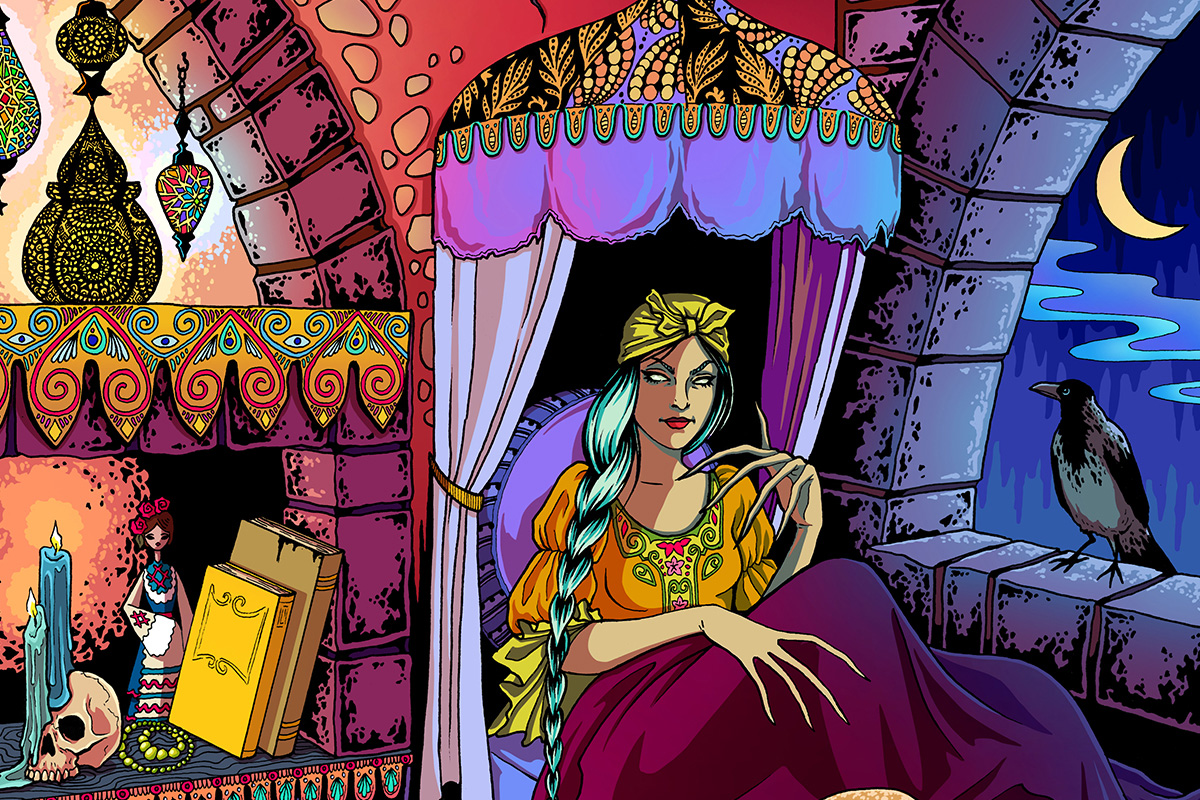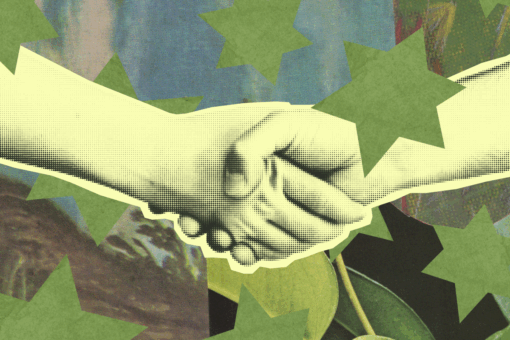Jewish visual artist Daniella Batsheva has become the first-ever female lead illustrator at Kerrang!, a popular UK music website that champions alternative music and artists. Batsheva, a self-described “horror nerd,” has recently been exploring her Jewish identity in her art. In her illustration style — gothic-inspired with a modern, acid candy-colored twist — Yemeni Jewish culture is viewed through what she calls “a darker lens.”
She not only creates punk and comic book-inspired designs for Kerrang!, but also contributes on a variety of projects: She has worked with singer Paris Jackson, made posters and cover art for bands and even designed a trophy for the horror film festival Shriekfest.
In her own work, her diverse characters and unexpected treatment of topics are paving the way to a more inclusive alternative space.
Hey Alma sat down with Batsheva to learn all about her mindful approach to art.
I wanted to start by saying congratulations on being Kerrang!’s first-ever female lead illustrator. That feels massive. They’ve been around for 40 years!
I’m trying to kind of downplay it, maybe because I feel like it’s just such a big thing — maybe I can’t even process it — and as somebody that kind of lives under a rock, I’m actually kind of shy. So the attention has been incredible. There’s just a lot of really cool things happening there. They have their first female brand manager right now, and she was really the one that trusted me to be able to do these illustrations that represent a wider range of people and interests and everything.
Don’t downplay it. That’s a major achievement. Why do you think your art was able to break through?
I think Kerrang! has a certain aesthetic and my art happened to be consistent with that aesthetic. The drawing style is very fun because a lot of it kind of looks like comic art. I do the line work, and then I color it digitally. Beyond that, I was trusted to do all of these illustrations because Kerrang! felt that as we move into the future and the alternative world expands to include marginalized groups, it would be a wise decision to have somebody experienced in the alternative world who is also from a marginalized group. My work is able to present topics in a way that is caring, sensitive and considerate.
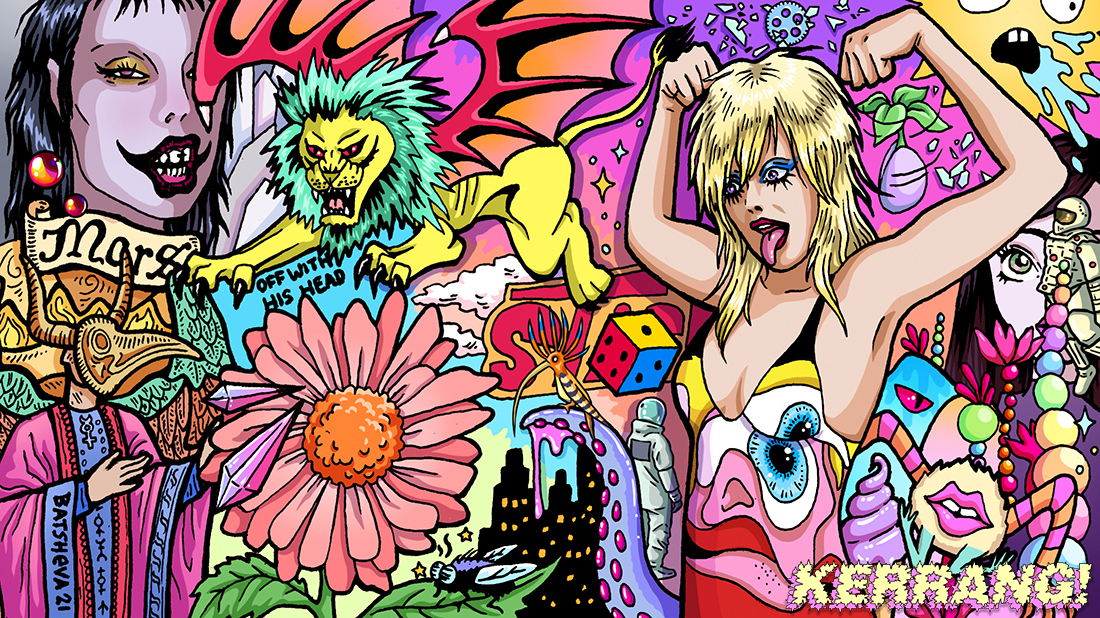
How do you work inclusion into your art?
When I work I’m thinking about the people that I want to represent as well as the topic. For example, if we’re doing a piece on mental health, I feel that men are underrepresented. I feel like if we’re going to progress as a species, we need to acknowledge that men should have the right to feel sad and talk about their feelings. So I’ll include depictions of men that are struggling with mental health issues. In Kerrang!’s burnout piece I wanted to show a woman that’s burned out. Women are also struggling in the workplace. We’re also very burnt out! I think that there’s a lot of emotional labor that is expected of women and so we put up with it without complaint. People don’t take women’s pain seriously, whether it’s physical, emotional and mental. It was a personal choice to include it because I feel that quite a lot. It’s like, I’m going out and I’m putting on a mask and I’m acting cool, but I’m tired. I have a ton of work. It’s all in the back of my mind, and I’m kind of dragging it with me.
While we’re on the subject of mental health, you’ve worked with singer-songwriter Paris Jackson to design her merchandise. Jackson has been vocal about her mental health struggles over the years. Did that factor into your thought process at all when you were designing for her?
Sometimes she would send over an image or give me a keyword to work with. Then I’d be like, okay, what are the emotions here? What’s coming through? What’s coming through in her music itself? Then I’d also factor in her personal aesthetic. I still see her discovering herself. I think that the topic of mental health has an influence on what I do. Maybe it doesn’t need to be directly spoken about, but it can show up in the artwork in other ways.
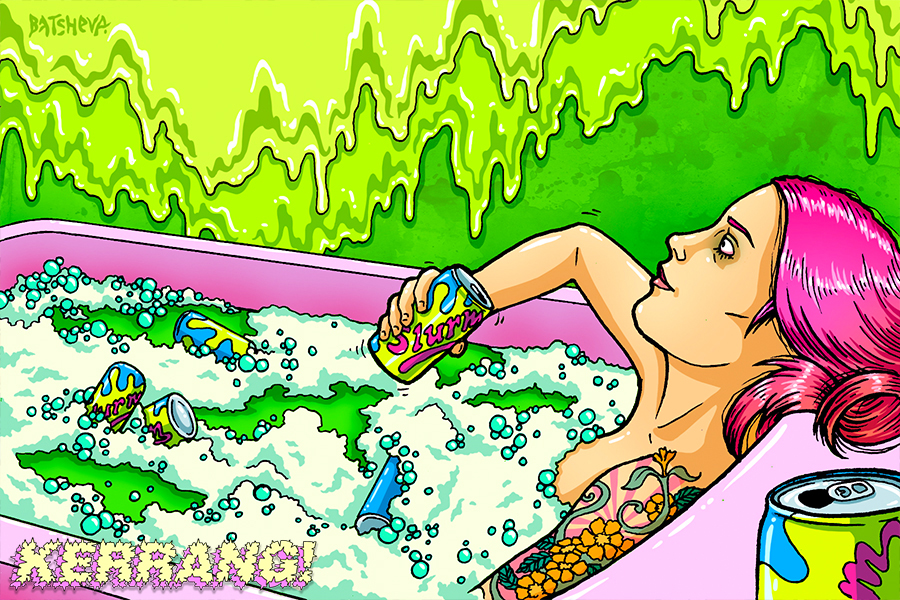
What is your earliest art memory?
The first time I remember being really self-aware while making art was when I was four. My mom and I had this little ritual. We would sit down on Friday nights and we would watch “Tales from the Crypt.” She would give me paper and I would just start drawing. She would be doodling, and I would copy whatever she was drawing. That was the first moment because I just remember being really happy because I loved spooky stuff.
That sounds so cozy. Is your mom also an artist?
She’s really creative but she never pursued it professionally. I think part of the reason why I was so encouraged to follow art is because my mom has some regrets about putting that on the sidelines, because she genuinely enjoys it. My whole family on my mom’s side is super creative. My aunt is a singer in Israel. We’ve got models, musicians, architects and chefs.
It sounds like you have a very creative family! Did that influence you at all?
I think my family has always understood that creativity is a part of life. It’s a part of who you are. It’s a part of who we are! They come from a village outside of Jerusalem and the whole family still lives there. Life there is very slow because you’re living amongst nature. Everybody makes their own cheeses and brews their own beer. They spend time outside in nature. Growing up, they didn’t really have the same sort of products and commercial things as the United States did. Everyone was really encouraged to go out into nature and find something and make something with that.
When I was little, I remember my mom showing me these beautiful purple flowers that looked like puffy balls and that had these gigantic spikes sticking out of them that could hurt you. My mom showed me that if you knew how to play with it you could pick one and if you turn it over this way and that to pull the spikes out and make a little ballerina. It’s things like that that sparked my imagination.
You’re from a Yemeni Jewish background — which is not frequently represented in visual media. Do you try to incorporate your identity into your art?
I’m grappling with it. I know who I am, I know where I come from. I know what my family history is. But growing up in a Jewish school in the United States, it was difficult to communicate because if you start talking about things like that, you realize – especially when you’re young – people don’t understand where you’re coming from. They don’t understand what it is to even eat the kinds of food that I’ve eaten, where it’s like kids weren’t eating bone marrow and curries and stuff like I was.
When I was growing up, there was a lot of racism in my neighborhood, and my mom actively encouraged me to not tell people I was Jewish. My schools were attacked, graffitied with swastikas, we had windows broken, all of that. I didn’t tell people I was Jewish for a really long time. Only recently have I been like, well wait, I love this. I love my culture. I love the artwork of my culture. So I’ve only recently started integrating it into my personal work.
This is something that I really, really want to explore, especially because I can’t find somebody in the alternative scene or in the goth, punk scene that’s doing something that is Middle Eastern influenced. I don’t feel the need to hide it. I really don’t care who doesn’t like the fact that I’m Middle Eastern or that I’m Israeli. I’m just going to do my thing because culturally I can’t really deny who I am and where I came from.
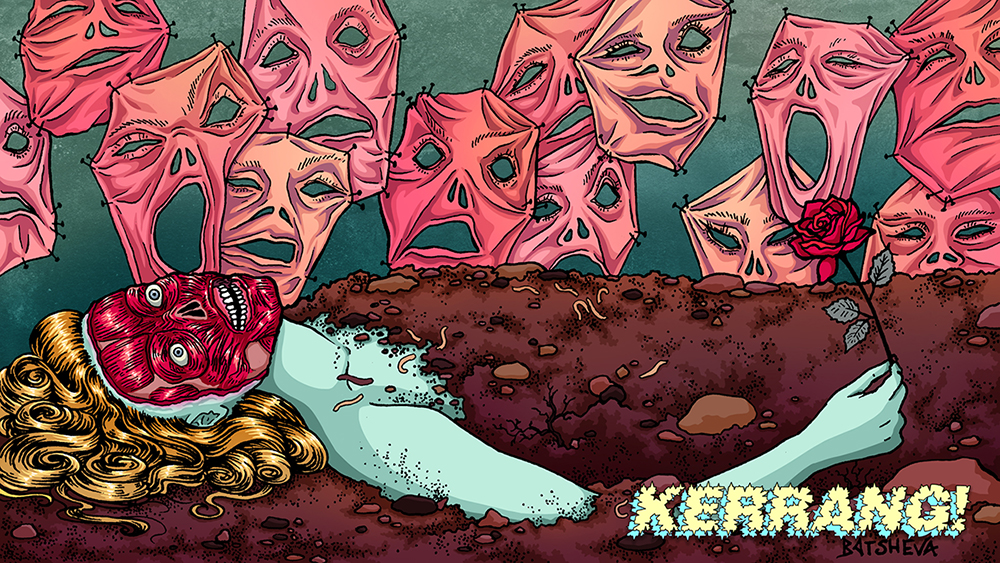
What frequently shows up in your work are gothic and horror influences. Have you ever been influenced by any Jewish horror?
There’s an old movie called “The Golem,” and it used to be one of the only Jewish horror stories out there on film. The movie was remade recently but the older version of the film depicts Jewish people as like these weird, mystical, almost witch-types. In 2018, “The Golem” was remade with an all Jewish cast — like all Jewish everyone, including behind the cameras. It was fantastic. Because they actually had all Jewish people working on it, they did it justice. At one point I was like, “Oh my god, they’re singing Avinu Malkeinu. This is a real thing!” I was so excited.
Beyond that, I feel like there is a huge lack of Jewish horror stories — partially because Jewish people don’t get enough attention in alternative spaces. That’s really what I’ve been feeling. I know that there are people out there right now that are trying to bring attention to Jewish horror stories, either made up or based on legend, but it’s mainly Eastern European Jewish people. There hasn’t been a Jewish horror story that I’ve seen based in the Middle East. This is something that I’m working on and trying to find people to connect with.
Would you ever want to illustrate a book or do an animated horror film that’s rooted in Jewish superstition?
I would say that’s kind of a dream job, actually. Once I do get a collection of pieces about being a Middle Eastern Jewish person in the alternative space, I want to put on a show. That’s something I’m hoping to do. I also want to hear about other people’s experiences in the alternative space as a Jewish woman. Shout out to Dani Divine, because homegirl – I love that woman. She goes out and she does these incredible acts. She’s dancing with fire. She’s coming out looking like the goddess of hell. But yo, she keeps Shabbat and I love that about her. I want to hear about more people like that. I want to see more Jewish women taking part in all of these different communities.
So if there’s somebody out there that is interested in doing this. I’d love to hear from them. My experiences in the alternative space has been like, you just don’t talk about being Jewish… it’s not something that you bring up. But now I’m finally like, yeah, I am Jewish and we’ve got kishka at home. You want some? I’m just not ashamed of it anymore.
